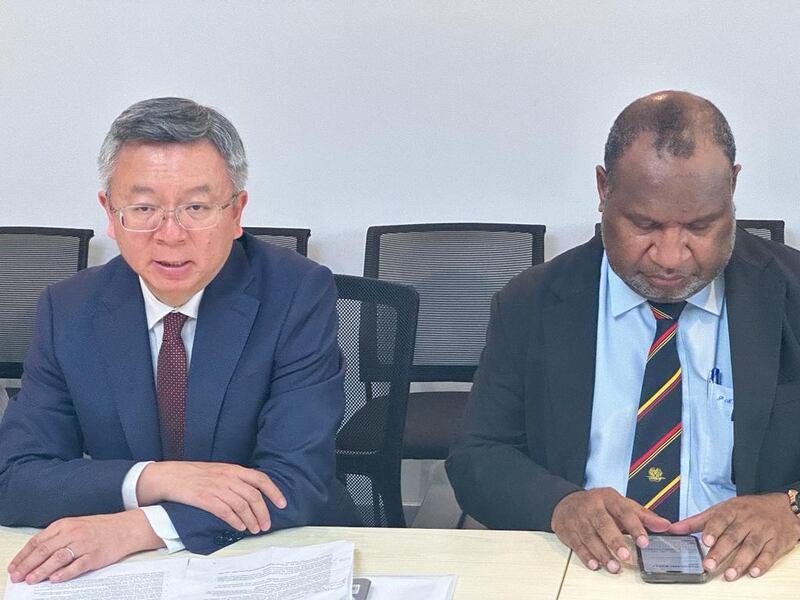The International Monetary Fund has reestablished a resident mission in Papua New Guinea, ending a more than two-decade absence from a Pacific island country with which it had a stormy relationship.
Prime Minister James Marape said the IMF, which is often a lender of last resort to developing nations, had been invited back and would help ensure an independent and transparent assessment of Papua New Guinea’s economic policies and performance.
“We told the IMF to come and assist, assess, look and advise us,” Marape said in a statement on Sunday. The presence of the IMF alongside institutions such as the World Bank and Asian Development Bank “signifies a comprehensive support system for PNG's economic development,” he said.
The fund’s office in Papua New Guinea was closed in the early 2000s after a backlash against policies, such as registration of customary land and the sale of state-owned companies, it attempted to impose on the country in return for providing a financial lifeline.
According to civil society organizations and media reports, three student protestors were killed and 17 wounded when police opened fire on a protest in June 2001 against the IMF and World Bank in Port Moresby. The incident followed more than a decade of social convulsions and conflict between the IMF and Papua New Guinea’s government over the fund’s so-called structural adjustment policies.
At a ceremony on Thursday, Marape and IMF deputy managing director Bo Li cut a red ribbon and a cake to mark the official opening of the fund’s new office in Port Moresby and the first visit by a top-level IMF official in recent memory.
The IMF’s involvement with Papua New Guinea stepped up significantly last year when the fund approved a U.S.$918 loan to help the country’s recovery from repeated economic shocks in the past decade, including the COVID-19 pandemic.
Stability for Papua New Guinea, which gained its independence from Australia in 1975, has remained elusive as it grapples with tribal violence and challenges such as corruption and lack of roads and basic healthcare in many regions.

The country, which is by far the most populous Pacific island nation with an estimated 12 million people, also has been a focus of the intensifying China-U.S. rivalry in the Pacific.
Li said he was saddened by loss of life and damage to businesses in Port Moresby in January when the capital was hit by riots and looting. At least 16 died in the Jan. 10 chaos that erupted after police walked off the job in protest at a pay cut the government later said was caused by a payroll system glitch.
The economic impact of the riots is not yet factored into the IMF’s near-term forecasts for Papua New Guinea “but we still see a positive sign on the overall economy,” said Li.
“As Papua New Guinea continues to build a stronger and more resilient economy, the IMF is here to support you,” Li said. “Papua New Guinea’s new [economic policy] program, supported by the IMF, supports a structural reform agenda on which the authorities are already making remarkable progress,” he said.
According to the IMF’s summary of the loan it approved last year, Papua New Guinea needs to make its government leaner without sacrificing social spending and strengthen anti-corruption efforts so it can attract more investment.
To reduce foreign exchange shortages – that contribute to nationwide disruptions such as fuel rationing – Papua New Guinea needs to strengthen its central bank and gradually move to a market-decided exchange rate for its currency, the summary said.
At the ceremony, Marape and Treasurer Ian Ling-Stuckey were at pains to emphasize the IMF was not dictating policy to the government.
“I want to inform the country that the reforms were not imposed on us. It was something that we knew we had to do,” Marape said.
BenarNews is an RFA-affiliated online news organization.
